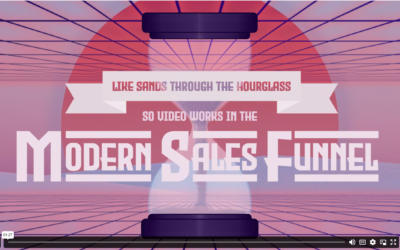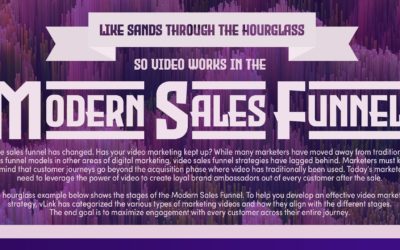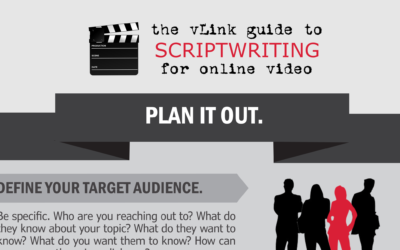
Is your video content pause-worthy? If not, your company is missing out. With 3.1 billion global viewers, video is the most popular Internet content. Every day customers search and watch videos to screen businesses, products and services. According to DemandSage, 64 percent of customers make purchases after viewing a brand’s videos. Also, 88 percent of customers claim that seeing a brand’s video influenced them to make a purchase.
Ready to add some videos to your marketing mix?
How do you stop the scroll? The first step is content planning. What do you want to talk about? What message do you need to amplify? Who are your viewers and what type of content will they enjoy? Are you more concerned with brand development or promoting a specific campaign, service or product? Where do you plan to distribute your content? How long should your videos be?
If you haven’t answered these questions, it’s time to start brainstorming.
Effective video marketing requires careful planning. In terms of content, it should capture your audience’s attention and entice them to learn more. Your content should reinforce your brand messaging. Each video should be polished and provide a clear, concise message. The quality and tone of your video should also align with the chosen content platform. At vLink Solutions, we developed a method called PAUSE Planning℠ to create binge-worthy content strategies for our clients.
The idea is to create videos that are pause-worthy that give viewers an “aha” moment – something to stop the scroll. PAUSE is an acronym for:
1. Purpose: The beginning of any video marketing strategy should start by defining its purpose. Do you want to build brand awareness? Promote or explain a product or service? Share your company culture? Provide thought leadership? Offer evidence of value through reviews, or simply entertain and build engagement? Mapping out your marketing objective will inform the most effective video type.
Hubspot Stat: Did you know that 40 percent of marketers claim the top benefit of creating video content is to help customers understand its products and services?
2. Attitudes: After you’ve established a purpose, it’s time to switch gears and consider your audience and the attitudes that drive their decisions. Who are they? What are their pain points? What does their success look like? What value will your solutions provide? Understanding your audience will allow you to make better decisions.
DemandSage stat: Did you know that YouTube users watch 1 billion hours of video daily?
3. Universe: Before you publish a new marketing video on a topic, survey the current landscape with some marketing reconnaissance. This step ensures your content is fresh and engaging. Your content should stand apart from your competitors and differentiate your brand, product, service and story.
DemandSage stat: Did you know that 73 percent of users prefer watching short-form videos when they want to learn about a product or service?
4. Synthesis: It’s time to create your content topics. Start with your purpose for each video. From there, pick the types of videos that will meet your needs. We have an excellent resource for this step: Video Marketing for the Modern Sales Funnel. Remember, you can reuse all or part of your videos across multiple distribution methods.
5. End Game: The key is to create actionable strategies. What outcome will your content provide viewers? Why is your content pause-worthy? What do you want viewers to take away from the video? What do you want them to do with the information you provided? Working with the end game in mind ensures your video maintains focus and ultimately accomplishes its goals.
Below are six aspects of a good brainstorming session to create pause-worthy video content.
- List every potential audience, from buyers to influencers and observers to competitors. The more specific, the better.
- For your most desired audience groups, define their demographics, top goals, pain points, hangouts and the value you provide.
- Analyze what makes content “pause-worthy” and adapt it to your specific audiences.
- Determine questions your audience may ask (or should ask). A good target is at least 20 questions.
- Identify patterns in the questions that will drive pause-worthy content ideas.
- Finally, generate and prioritize which content ideas will address your audience’s needs and align with multiple customer journey stages.
The ultimate goal is to get More Play for your video and More Pause on your message.
If you need some help, vLink Solutions offers facilitated half-day PAUSE Planning℠ workshops to help you find the conversation your audience will pause for – and empower your video content to spark and sustain engagement. vLink Solutions is more than a production company. From ideation to distribution, our experts ensure you create great content and distribute it to the right audiences. We are marketers who know how to leverage video and live streaming to get your message delivered.
Search vLink’s Resources, News, and Events
vLink Solutions is always adding new tips and tricks, case studies, infographics, and more.
5 Video Types To Create Brand Advocates
Video marketing is an effective way to engage customers and build brand awareness. With the popularity of video content on websites and social media, businesses should be leveraging video marketing to turn customers into brand advocates after the purchase.
Interactive Video Lets the Viewer Drive the Story – Case Study
Stratix Corporation creates and manages mobility programs to transform mobile support for some of the most iconic brands around the globe. We are always excited to work with them. Recently, they challenged us to create a series of interactive videos that show various...
The Modern Sales Funnel for Video Marketing
The sales funnel has changed. Has your video marketing kept up? With so many customer journey models, it is challenging for marketers to know when and how to use video effectively in their company’s model.
Leveraging a Third-person Voice – Case Study
LeasePlan is one of the world’s leading fleet management and driver mobility companies, with over 1.8 million (oops Scott said 18 million) vehicles under management in more than 30 countries. Their U.S. headquarters is in Alpharetta, Georgia, and has been a vLink...
Humor Works for Revegy – Case Study
It’s always a good day when our friends over at Revegy, creators of an account-based sales execution platform, give us a call to produce some content. They were in search of a fun and entertaining way to highlight and overview their software using visuals and...
Discover the Modern Sales Funnel: Infographic
vLink Solutions designed this modern sales funnel and infographic as a roadmap for businesses and organizations looking to leverage video marketing.
The vLink Guide to Scriptwriting for Online Video: Infographic
So you want to make a video to support a new product, program or campaign? Video marketing can be the most effective way to reach your audience. According to Business Insider, the number of people watching videos online reached 244.4 million in 2020 and is only going...
3 Steps to Make Your Video Scripts Irresistible
Scriptwriting is one of the most important steps of the video production process. It is also the step that we find companies struggle with the most. While many adults have been schooled in writing, script writing is a different skill altogether. Poor script writing...
Make Hybrid Events Worth Every Dollar for Virtual Attendees
Published in Smart Meetings on 6/9/22. The average price for a paid virtual event is $443. Are virtual attendees seeing value? It depends. “To demand a fee, digital events must boast compelling content and a seamless experience. According to Kim Myhre, founder of...
Elevate Your Virtual Events to Engage Seven-Figure Clients and Prospects
This article was published in CMW on 4/27/22. Webinars are standard fare for general audiences, but how do you host virtual events that engage clients and prospects representing millions of dollars in potential revenue? At this level, the game changes. Expectations...
How Hybrid Events Have Evolved—and 9 Ways to Prepare for What’s Next
We asked 11 top event professionals for a widespread view of what works now in hybrid event production—and what needs to happen to make this an effective, long-term event format.











